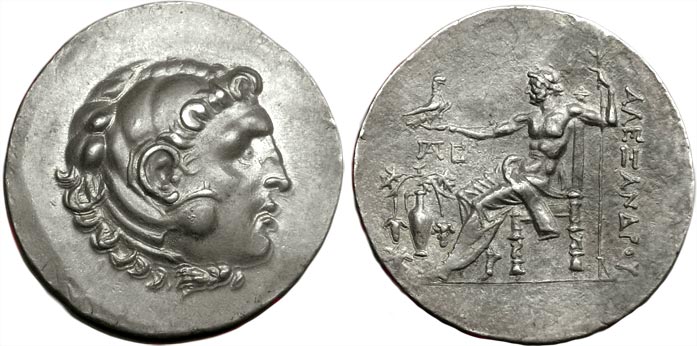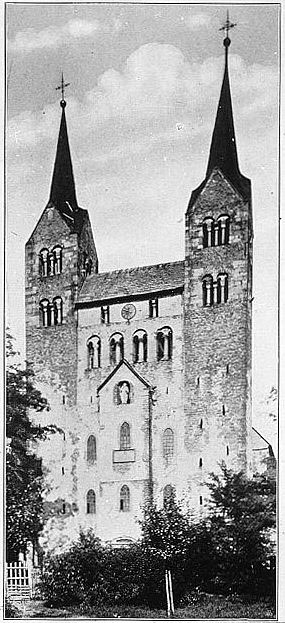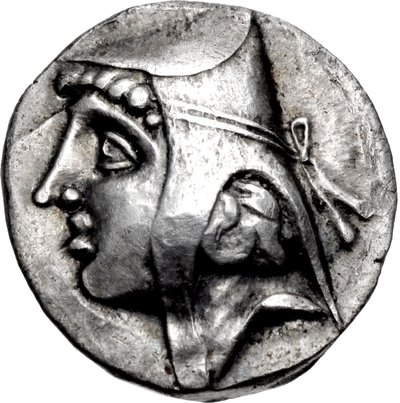|
Vardanes II Of Parthia
Vardanes II was the son of Vologases I or Vardanes I and briefly ruler of parts of the Parthian Empire. In ancient records he only appears in Tacitus.Tacitus, Annals 13,7 Otherwise he is only known from coins that are dated between 55 and 58 CE. He rebelled against Vologases I at Seleucia from about 55 to 58 CE and must have occupied Ecbatana Ecbatana () was an ancient city, the capital of the Median kingdom, and the first capital in History of Iran, Iranian history. It later became the summer capital of the Achaemenid Empire, Achaemenid and Parthian Empire, Parthian empires.Nardo, Do ..., since he issued coins from the mint there, bearing the likeness of a young beardless king wearing a diadem with five pendants. The lack of facial lesions on his coins sets him apart from other Parthian rulers, many of whom were depicted with nodules resembling trichoepithelioma. Other than that nothing more about him is known. References Sources * * * * * 50s deaths ... [...More Info...] [...Related Items...] OR: [Wikipedia] [Google] [Baidu] |
Tetradrachm
The tetradrachm () was a large silver coin that originated in Ancient Greece. It was nominally equivalent to four drachmae. Over time the tetradrachm effectively became the standard coin of the Antiquity, spreading well beyond the borders of the Greek World. As a result, tetradrachms were minted in vast quantities by various polities in many weight and fineness standards, though the Athens-derived ''Attic standard'' of about 17.2 grams was the most common. Because of their large size, tetradrachms were often used by various states or rulers to advertise themselves or to deliver political messages. Popularity of the tetradrachm outlived the political independence of the Greeks and it remained in wide circulation in the Mediterranean up until Crisis of the Third Century, while debased varieties persisted in India and Central Asia into early Middle Ages. Due to their often high artistic level tetradrachms are eagerly collected in modern times, and well-preserved or rare specimen ... [...More Info...] [...Related Items...] OR: [Wikipedia] [Google] [Baidu] |
Seleucia
Seleucia (; ), also known as or or Seleucia ad Tigrim, was a major Mesopotamian city, located on the west bank of the Tigris River within the present-day Baghdad Governorate in Iraq. It was founded around 305 BC by Seleucus I Nicator as the first capital of the Seleucid Empire, and remained an important center of trade and Hellenistic culture after the imperial capital relocated to Antioch. The city continued to flourish under Parthian rule beginning in 141 BC; ancient texts claim that it reached a population of 600,000. Seleucia was destroyed in 165 AD by Roman general Avidius Cassius and gradually faded into obscurity in the subsequent centuries. The site was rediscovered in the 1920s by archaeologists. Names Seleucia (, ''Seleúkeia'') is named for Seleucus I Nicator, who enlarged an earlier settlement and made it the capital of his empire around 305 BC. It was the largest and most important of the many cities to bear its name but is sometimes distinguished as ... [...More Info...] [...Related Items...] OR: [Wikipedia] [Google] [Baidu] |
Parthian Empire
The Parthian Empire (), also known as the Arsacid Empire (), was a major Iranian political and cultural power centered in ancient Iran from 247 BC to 224 AD. Its latter name comes from its founder, Arsaces I, who led the Parni tribe in conquering the region of Parthia in Iran's northeast, then a satrapy (province) under Andragoras, who was rebelling against the Seleucid Empire. Mithridates I ( BC) greatly expanded the empire by seizing Media and Mesopotamia from the Seleucids. At its height, the Parthian Empire stretched from the northern reaches of the Euphrates, in what is now central-eastern Turkey, to present-day Afghanistan and western Pakistan. The empire, located on the Silk Road trade route between the Roman Empire in the Mediterranean Basin and the Han dynasty of China, became a center of trade and commerce. The Parthians largely adopted the art, architecture, religious beliefs, and regalia of their culturally heterogeneous empire, which encompassed Pe ... [...More Info...] [...Related Items...] OR: [Wikipedia] [Google] [Baidu] |
Vologases I Of Parthia
Vologases I ( ''Walagash'') was the King of Kings of the Parthian Empire from 51 to 78. He was the son and successor of Vonones II (r. 51). He was succeeded by his younger son Pacorus II, who continued his policies. Name Vologases is the Greek language, Greek and Latin form of the Parthian language, Parthian ''Walagaš'' (). The name is also attested in New Persian as ''Balāsh'' and Middle Persian as ''Wardākhsh'' (also spelled ''Walākhsh''). The etymology of the name is unclear, although Ferdinand Justi proposes that ''Walagaš'', the first form of the name, is a compound of words "strength" (''varəda''), and "handsome" (''gaš'' or ''geš'' in Modern Persian). Background Vologases was a son of Vonones II, a Parthian prince who ruled the northern Iranian kingdom of Media Atropatene, and possibly subsequently the whole Parthian Empire for a few months. Vologases' mother was a Greeks, Greek concubine of the Parthian Harem#Pre-Islamic origins, harem. The name of the Arsacid ... [...More Info...] [...Related Items...] OR: [Wikipedia] [Google] [Baidu] |
Arsacid Dynasty Of Parthia
The Parthian Empire (), also known as the Arsacid Empire (), was a major Iranian political and cultural power centered in ancient Iran from 247 BC to 224 AD. Its latter name comes from its founder, Arsaces I, who led the Parni tribe in conquering the region of Parthia in Iran's northeast, then a satrapy (province) under Andragoras, who was rebelling against the Seleucid Empire. Mithridates I ( BC) greatly expanded the empire by seizing Media and Mesopotamia from the Seleucids. At its height, the Parthian Empire stretched from the northern reaches of the Euphrates, in what is now central-eastern Turkey, to present-day Afghanistan and western Pakistan. The empire, located on the Silk Road trade route between the Roman Empire in the Mediterranean Basin and the Han dynasty of China, became a center of trade and commerce. The Parthians largely adopted the art, architecture, religious beliefs, and regalia of their culturally heterogeneous empire, which encompassed Pers ... [...More Info...] [...Related Items...] OR: [Wikipedia] [Google] [Baidu] |
Vardanes I
Vardanes I was a king of the Parthian Empire from 40 to 46 AD. He was the heir apparent of his father Artabanus II (), but had to continually fight against his brother Gotarzes II, a rival claimant to the throne. Vardanes' short reign ended when he was assassinated while hunting at the instigation of a party of Parthian nobles . Name "Vardanes" (also spelled Bardanes) is the Latin attestation of the Middle Iranian name ''Wardān'', meaning "rose". The name is transliterated in Greek as ''Ordanes'' and ''Ordones'' , and in Hatran Aramaic as wrdn. Biography In , Vardanes' father and reigning Parthian king Artabanus II () died, entrusting his realm to Vardanes. However, the throne was seized by Gotarzes II, an adopted son of Artabanus II. Gotarzes had another of his brothers, Artabanus, along with his wife and child, executed shortly after. An uproar against this execution shortly followed, with an appeal being sent to Vardanes, who took Gotarzes by surprise and defeated ... [...More Info...] [...Related Items...] OR: [Wikipedia] [Google] [Baidu] |
Zoroastrianism
Zoroastrianism ( ), also called Mazdayasnā () or Beh-dīn (), is an Iranian religions, Iranian religion centred on the Avesta and the teachings of Zoroaster, Zarathushtra Spitama, who is more commonly referred to by the Greek translation, Zoroaster ( ). Among the world's oldest organized faiths, its adherents exalt an Creator deity, uncreated, Omnibenevolence, benevolent, and List of knowledge deities#Persian mythology, all-wise deity known as Ahura Mazda (), who is hailed as the supreme being of the universe. Opposed to Ahura Mazda is Ahriman, Angra Mainyu (), who is personified as a List of death deities#Persian-Zoroastrian, destructive spirit and the adversary of all things that are good. As such, the Zoroastrian religion combines a Dualism in cosmology, dualistic cosmology of good and evil with an eschatological outlook predicting the Frashokereti, ultimate triumph of Ahura Mazda over evil. Opinions vary among scholars as to whether Zoroastrianism is monotheistic, polyth ... [...More Info...] [...Related Items...] OR: [Wikipedia] [Google] [Baidu] |
Tacitus
Publius Cornelius Tacitus, known simply as Tacitus ( , ; – ), was a Roman historian and politician. Tacitus is widely regarded as one of the greatest Roman historians by modern scholars. Tacitus’ two major historical works, ''Annals'' (Latin: ) and the ''Histories'' (Latin: ), originally formed a continuous narrative of the Roman Empire from the death of Augustus (14 AD) to the end of Domitian’s reign (96 AD). The surviving portions of the Annals focus on the reigns of Tiberius, Claudius, Nero, and those who reigned in the Year of the Four Emperors (69 AD). Tacitus's other writings discuss oratory (in dialogue format, see ), Germania (in ''De origine et situ Germanorum''), and the life of his father-in-law, Agricola (the general responsible for much of the Roman conquest of Britain), mainly focusing on his campaign in Britannia ('' De vita et moribus Iulii Agricolae''). Tacitus's ''Histories'' offers insights into Roman attitudes towards Jews, ... [...More Info...] [...Related Items...] OR: [Wikipedia] [Google] [Baidu] |
Annals (Tacitus)
The ''Annals'' () by Roman historian and senator Tacitus is a history of the Roman Empire from the reign of Tiberius to that of Nero, the years AD 14–68. The ''Annals'' are an important source for modern understanding of the history of the Roman Empire during the 1st century AD. Tacitus' final work, modern historians generally consider it his magnum opus which historian Ronald Mellor says represents the "pinnacle of Roman historical writing". Tacitus' ''Histories'' and ''Annals'' together amounted to 30 books, although some scholars disagree about which work to assign some books to, traditionally 14 are assigned to ''Histories'' and 16 to ''Annals''. Of the 30 books referred to by Jerome about half have survived. Modern scholars believe that as a Roman senator, Tacitus had access to '' Acta Senatus''—the Roman senate's records—which provided a solid basis for his work. Although Tacitus refers to part of his work as "my annals", the title of the work ''Annals'' used tod ... [...More Info...] [...Related Items...] OR: [Wikipedia] [Google] [Baidu] |
Ecbatana
Ecbatana () was an ancient city, the capital of the Median kingdom, and the first capital in History of Iran, Iranian history. It later became the summer capital of the Achaemenid Empire, Achaemenid and Parthian Empire, Parthian empires.Nardo, Don. "Ecbatana." ''The Greenhaven Encyclopedia of Ancient Mesopotamia'', edited by Robert B. Kebric, Greenhaven Press, 2007, pp. 97-98. ''Gale In Context: World History'', link.gale.com/apps/doc/CX3205100129/WHIC?u=wylrc_uwyoming&sid=summon&xid=e9682d3c. Accessed 20 Nov. 2022. It was also an important city during the Seleucid Empire, Seleucid and Sasanian Empire, Sasanian empires. It is believed that Ecbatana is located in the Zagros Mountains, the east of central Mesopotamia, on Hagmatana Hill (Tappe-ye Hagmatāna). Ecbatana's strategic location and resources probably made it a popular site even before the 1st millennium BC. Along with Athens in Greece, Rome in Italy and Susa in Iran, Ecbatana is one of the few ancient cities in the world th ... [...More Info...] [...Related Items...] OR: [Wikipedia] [Google] [Baidu] |
Arsacid Dynasty
The Parthian Empire (), also known as the Arsacid Empire (), was a major Iranian political and cultural power centered in ancient Iran from 247 BC to 224 AD. Its latter name comes from its founder, Arsaces I, who led the Parni tribe in conquering the region of Parthia in Iran's northeast, then a satrapy (province) under Andragoras, who was rebelling against the Seleucid Empire. Mithridates I ( BC) greatly expanded the empire by seizing Media and Mesopotamia from the Seleucids. At its height, the Parthian Empire stretched from the northern reaches of the Euphrates, in what is now central-eastern Turkey, to present-day Afghanistan and western Pakistan. The empire, located on the Silk Road trade route between the Roman Empire in the Mediterranean Basin and the Han dynasty of China, became a center of trade and commerce. The Parthians largely adopted the art, architecture, religious beliefs, and regalia of their culturally heterogeneous empire, which encompassed Pe ... [...More Info...] [...Related Items...] OR: [Wikipedia] [Google] [Baidu] |
List Of Parthian Monarchs
The Parthian, or Arsacid, monarchs were the rulers of Iran from their victories against the Hellenistic Seleucid Empire in the 140s BC (although they had ruled a smaller kingdom in the region of Parthia for roughly a century at that point, founded by Arsaces I) until the defeat of the last Parthian king, Artabanus IV, at the Battle of Hormozdgan in AD 224. At the height of their power, the Parthian kings ruled an empire stretching from present-day central-eastern Turkey to present-day Afghanistan and western Pakistan. Chronology of Parthian kings The rough sequence of Parthian rulers is relatively well-established from surviving literary sources and traditions, especially histories and accounts written by Roman historians, but many uncertainties exist in terms of the details. The modern understanding of the chronology and sequence of the Parthian rulers is based on surviving sources, but also on information that can be gleaned from Parthian coins, such as dates and the name ... [...More Info...] [...Related Items...] OR: [Wikipedia] [Google] [Baidu] |








